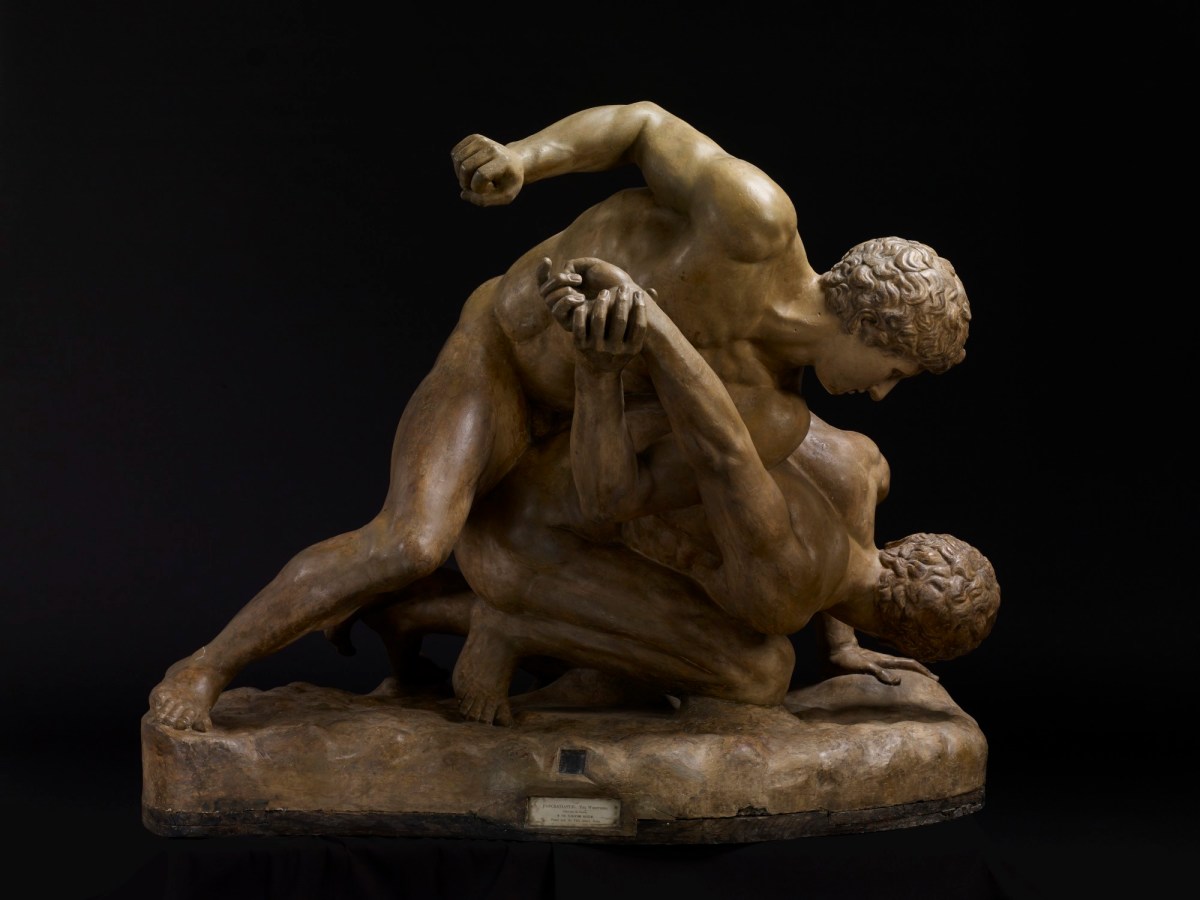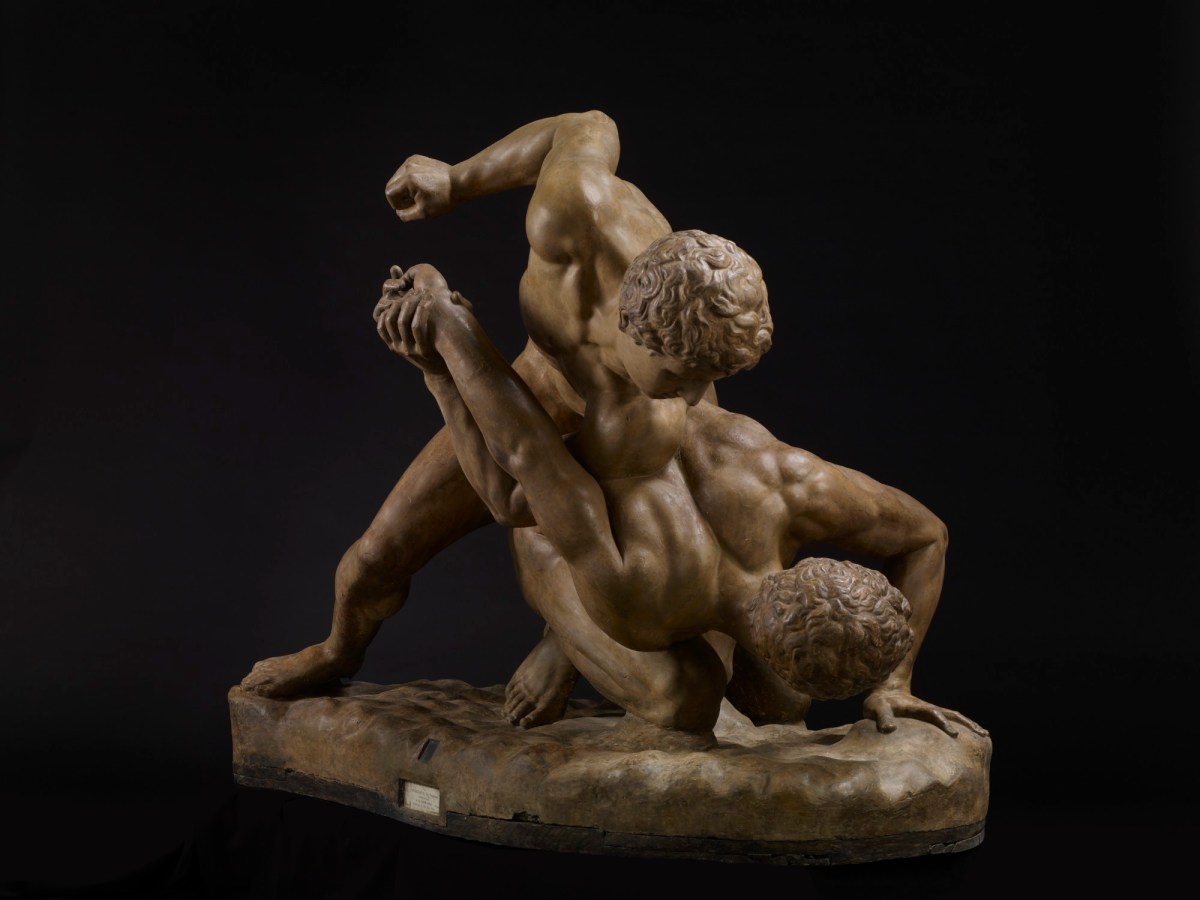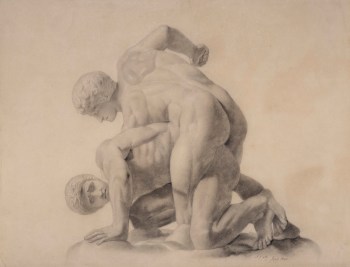
Pergamene school and Lysippus, The Wrestlers.
Plaster cast. 1020 mm x 730 mm x 1190 mm. © Photo: Royal Academy of Arts, London. Photographer: Paul Highnam.
This image is not available to download. To licence this image for commercial purposes, contact our Picture Library at picturelibrary@royalacademy.org.uk

Pergamene school and Lysippus, The Wrestlers.
Plaster cast. 1020 mm x 730 mm x 1190 mm. © Photo: Royal Academy of Arts, London. Photographer: Paul Highnam.
This image is not available to download. To licence this image for commercial purposes, contact our Picture Library at picturelibrary@royalacademy.org.uk

Pergamene school and Lysippus, The Wrestlers.
Plaster cast. 1020 mm x 730 mm x 1190 mm. © Photo: Royal Academy of Arts, London. Photographer: Paul Highnam.
This image is not available to download. To licence this image for commercial purposes, contact our Picture Library at picturelibrary@royalacademy.org.uk

Pergamene school and Lysippus, The Wrestlers.
Plaster cast. 1020 mm x 730 mm x 1190 mm. © Photo: Royal Academy of Arts, London. Photographer: Paul Highnam.
This image is not available to download. To licence this image for commercial purposes, contact our Picture Library at picturelibrary@royalacademy.org.uk
The Wrestlers
Attributed to Pergamene school and Follower of Lysippus (fl. ca. 370 BC- ca. 300 BC)
RA Collection: Art
On free display in The Julia and Hans Rausing Hall
Two men engage in the pankration style of wrestling, a sporting event introduced into the Greek Olympic Games in 648 BC.
This is a plaster cast of a marble sculpture which was discovered in Rome in 1583 and is now in the Uffizi collection. It was discovered with another sculpture, the ‘Niobe Group', and initially the two groups were thought to have belonged together. Soon after the discovery of the two groups they were bought by Cardinal Ferdinando de’Medici, and they were installed in the Villa Medici in Rome by 1594. The Wrestlers was sent to Florence in August 1677, and was positioned in the Tribuna of the Uffizi by 1688.
The Wrestlers is itself thought to be a copy of a bronze group, perhaps related to the Pergamene school or the Lysippus school. The heads of both wrestlers and right arm of the upper figure in the original marble statue are restorations—although the head of the lower wrestler is antique, neither is original. The statue was cast many times in different media including bronze, lead and plaster. In the 18th century it was much admired in Britain: Sir Joshua Reynolds in his 'Tenth Discourse' discussed The Wrestlers, explaining that 'the group of the Boxers is a remarkable instance; they are engaged in the most animated action with the greatest serenity of countenance. This is not recommended for imitation, (for there can be no reason why the countenance should not correspond with the attitude and expression of the figure,) but is mentioned in order to infer from hence, that this frequent deficiency in ancient Sculpture could proceed from nothing but a habit of inattention to what was considered as comparatively immaterial.'
Another Academician, sculptor John Flaxman, discussed the group at length in his Lectures on Sculpture. He felt that 'the group of boxers … exhibit the greatest muscular display in violent action. The forced action of the boxers renders the muscular configuration of their shoulders so different in appearance from moderate action and states of rest, that we may derive a double advantage from the anatomical consideration of their forms: first, we shall learn the cause of each particular form, and, secondly, we shall be convinced how rationally and justly the ancients copied nature.'
The date of this cast is not entirely certain as there was mention of a cast of The Wrestlers in Joseph Baretti’s A guide through the Royal Academy of 1781 and a cast of the work is visible in the painting attributed to Johann Zoffany RA, The Antique School of the Royal Academy at New Somerset House, c. 1780-83. However, as Council Minutes record, another cast was given by the Prince Regent in 1816.
Further reading
John Flaxman, Lectures on Sculpture, second edition, London, 1838, pp. 112-13
Sir Joshua Reynolds, 'Discourse X', Discourses on Art, ed. by Robert W. Wark, New Haven and London, 1981, p. 181
Object details
1020 mm x 730 mm x 1190 mm
Associated works of art
1 results
Start exploring the RA Collection
- Explore art works, paint-smeared palettes, scribbled letters and more...
- Artists and architects have run the RA for 250 years.
Our Collection is a record of them.




